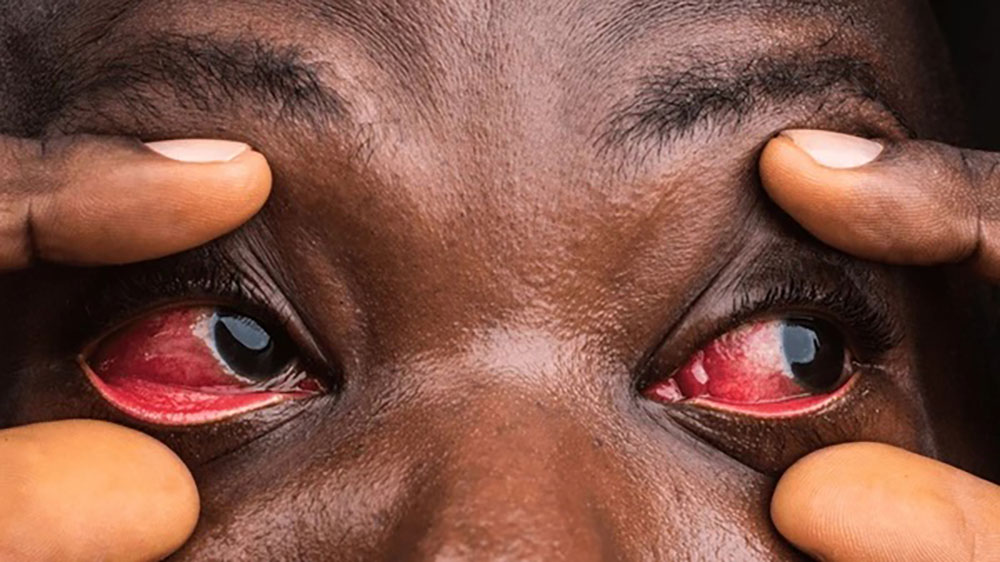In March 2024, the Health Ministry of Uganda declared an outbreak of red eyes, also known as conjunctivitis, primarily affecting schools and prison facilities in Kampala. This infectious disease has since spread to various districts across the country. Characterized by inflammation of the conjunctiva, red eyes result in symptoms such as redness, blurred vision, itching, and burning sensations.
Understanding Red Eyes
Red eyes, or conjunctivitis, occur when the conjunctiva—the membrane covering the front of the eye and lining the eyelids—becomes inflamed. The condition can cause the blood vessels in this membrane to dilate, making the eyes appear red. Conjunctivitis can be triggered by several factors:
- Infections: Bacterial or viral infections are common causes. Bacterial conjunctivitis often presents with a sticky discharge, while viral conjunctivitis might accompany other symptoms like cold or flu.
- Allergic Reactions: Seasonal allergies to pollen or animals can inflame the eyes.
- Irritation: Physical irritants, such as foreign objects or chemical exposure, can also lead to red eyes.
- Rarer Causes: Increased pressure inside the eye or other less common conditions might be involved.
Treatment and Recommendations
The Health Ministry has emphasized preventive measures such as regular hand washing to curb the spread of the disease. For treatment, recommendations include:
- Bacterial Conjunctivitis: Antibiotic eye drops may be prescribed if the condition persists beyond a week.
- Viral Conjunctivitis: Generally resolves on its own; supportive treatments such as cool compresses and artificial tears can help.
- Allergic Conjunctivitis: Antihistamine drops or oral medications may provide relief.
Dr. Christine Wako from Alan Galpin Clinic described the red eyes outbreak as different from past occurrences. According to her observations, the current cases resolve more quickly, often within four days, and are less severe in terms of swelling and discharge. Treatment at her clinic included Betamethasone-Neomycin eye drops and recommendations for regular hand and face washing.
Controversies and Misconceptions
During this outbreak, some local beliefs have emerged regarding alternative treatments. A notable myth is that urine can cure red eyes. Dr. Kenneth Cana, Gulu District Health Officer, strongly refutes this claim, stating, “The belief that urine can cure red eye disease is false. Urine is toxic and has no medical benefit in treating eye conditions.” He advises the public to seek professional medical treatment rather than relying on unproven remedies.
Existing Knowledge and Verdict
The medical community widely acknowledges that while home remedies like cool compresses and artificial tears can alleviate symptoms of red eyes, proper medical treatment is essential, especially for persistent or severe cases. The use of urine or other unverified methods is not recommended and can potentially worsen the condition.
In conclusion, while the outbreak of red eyes in Uganda poses a significant public health challenge, it is crucial to rely on evidence-based treatments and preventive measures. Myths and misinformation, such as the purported benefits of urine, should be avoided in favor of proven medical practices to ensure effective management and recovery.









